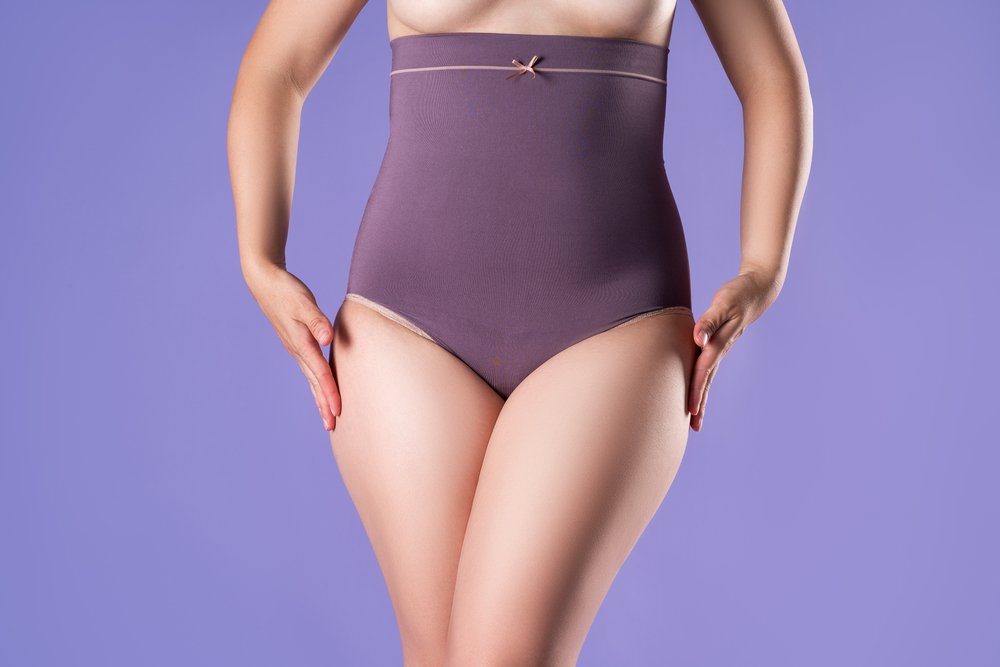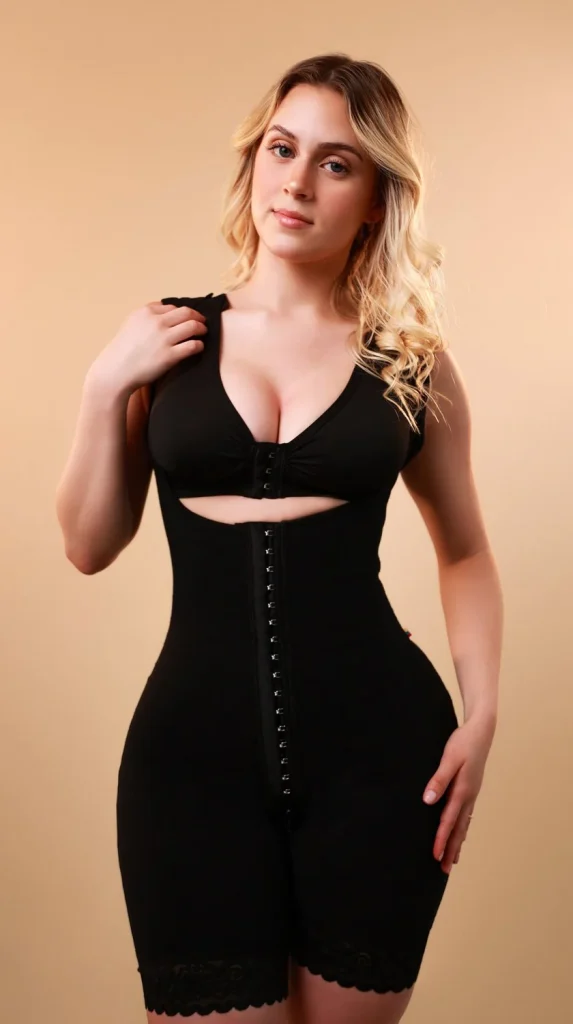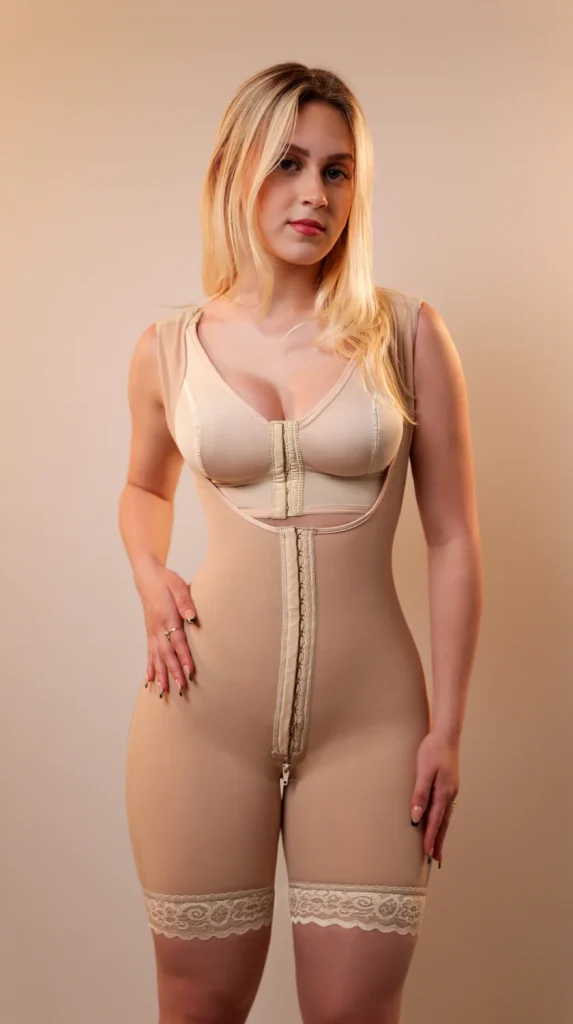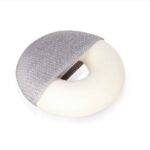What size faja after BBL: The appropriate size of a faja (compression garment) after a Brazilian Butt Lift (BBL) can vary depending on individual factors such as body shape, the extent of the procedure, and personal preference. It’s essential to follow the recommendations provided by your surgeon or healthcare professional. They will typically provide specific guidelines based on your unique circumstances.
Generally, after a BBL, you’ll be advised to wear a compression garment to help reduce swelling, provide support, and aid in contouring the newly augmented areas. These garments are typically available in various sizes and styles to accommodate different body types and surgical outcomes.
Importance of Proper Sizing: Why Getting the Right Size Faja Matters
Getting the right size faja (compression garment) after a surgical procedure, such as a Brazilian Butt Lift (BBL), is crucial for several reasons:
- Optimal Compression and Support: Compression garments are designed to provide consistent pressure to the treated areas, helping reduce swelling and inflammation. Wearing a faja that is too tight can cause discomfort and restrict blood circulation, while one that is too loose may not provide adequate compression. Proper sizing ensures that the faja offers the right level of support and compression, promoting optimal healing and contouring of the body.
- Contouring and Shape Enhancement: A well-fitted faja aids in shaping and contouring the body after a BBL. It helps maintain the desired shape and enhances the results of the surgery by supporting the newly transferred fat cells. The right size faja ensures that the compression is distributed evenly, helping achieve the desired aesthetic outcome.
- Comfort and Mobility: Wearing a faja that fits properly is essential for comfort and mobility during the recovery period. If the faja is too tight or too loose, it can lead to discomfort, chafing, and restricted movement. On the other hand, the correct size faja allows for easier movement, making daily activities more manageable and facilitating a more comfortable recovery experience.
- Reduced Complications: Wearing a properly sized faja can help minimize potential complications. Compression garments aid in preventing fluid buildup, reducing the risk of seromas (accumulation of fluid) and edema (swelling). They also support the skin, minimizing the chance of sagging or uneven healing. By ensuring the right fit, you can help reduce the likelihood of postoperative complications.
To ensure you have the right size faja, it is essential to consult with your surgeon or healthcare professional. They will consider your body measurements, surgical outcome, and postoperative needs to guide you in selecting the appropriate size. Following their recommendations will help maximize the benefits of wearing a faja and support your recovery process effectively.

Taking Accurate Measurements: Steps to Determine Your Faja Size
To determine your faja (compression garment) size accurately, you can follow these step:
- Check the Sizing Chart: Consult the sizing chart provided by the manufacturer or your healthcare professional. Sizing charts typically provide measurements for different body parts, such as waist, hips, and sometimes the bust or chest. Each size range will correspond to specific measurements.
- Use a Measuring Tape: Grab a flexible measuring tape, like the ones used for sewing, and ensure it is not stretched or twisted.
- Waist Measurement: Stand up straight and wrap the measuring tape around the narrowest part of your waist, usually located above the belly button and below the ribcage. Keep the tape parallel to the ground and snug but not too tight. Note down the measurement in inches or centimeters.
- Hip Measurement: Measure the fullest part of your hips by wrapping the measuring tape around your buttocks and the widest area of your hips. Make sure the tape is level and not too tight. Note down the measurement.
- Compare Measurements: Compare your waist and hip measurements with the sizing chart. Select the faja size that corresponds to your measurements. If your measurements fall between sizes, it’s generally recommended to choose the larger size for a more comfortable fit.
- Consult with Your Healthcare Professional: It’s crucial to consult with your surgeon or healthcare professional, as they can provide specific guidance based on your individual needs and the desired outcome of your surgery. They may have additional recommendations or considerations to help you determine the appropriate faja size.
Remember that sizing guidelines can vary between manufacturers, so it’s important to follow the specific instructions provided by the faja brand or your healthcare professional to ensure the most accurate sizing.
Understanding Faja Size Charts: Decoding the Sizing Guidelines
When using faja (compression garment) size charts, it’s important to understand the sizing guidelines provided. Here’s a breakdown to help you decode faja size charts:
| Aspect | Description |
|---|---|
| Measurement Units | Pay attention to whether the size chart uses inches or centimeters. |
| Body Parts | Identify which body parts are listed on the size chart and take corresponding measurements. |
| Size Ranges | Size ranges are typically denoted by Small, Medium, Large, or numerical sizes. Each size range corresponds to specific measurements. |
| In-Between Sizes | If your measurements fall between two sizes, it’s generally recommended to choose the larger size for a more comfortable fit. |
| Body Shapes | Consider your body shape and proportions when selecting a faja size. Some charts may provide additional guidance based on body shape. |
| Manufacturer Guidelines | Always refer to the size chart provided by the specific faja brand for accurate sizing. They may have additional instructions or considerations. |
If you have any doubts or uncertainties about selecting the right size, consult with your surgeon or healthcare professional.
Faja Size Adjustments: Finding the Perfect Fit for Your Body
Finding the perfect fit for your body when it comes to a faja (compression garment) may require some adjustments. Here are some tips to help you achieve the best fit:
- Size Chart: Start by referring to the size chart provided by the faja manufacturer or your healthcare professional. Use your measurements to determine the initial size selection.
- Try Different Sizes: If your measurements fall between two sizes, consider trying both sizes to see which one provides a better fit. Pay attention to how the faja feels in terms of compression, comfort, and support.
- Adjusting Hooks or Closures: Many fajas come with adjustable hooks, closures, or zippers. If the initial size feels too tight or too loose, experiment with different hook or closure settings to customize the fit. This allows you to adapt the compression level to your comfort.
- Strap Adjustment: Some fajas have adjustable straps to provide additional support and ensure a proper fit. If the straps are too tight or too loose, make necessary adjustments to achieve a comfortable fit.
- Consult with a Professional: If you’re unsure about the fit or need assistance with adjustments, consult with your surgeon, healthcare professional, or a faja specialist. They can provide expert guidance and help you find the ideal fit for your body shape and postoperative needs.
- Gradual Sizing Down: During the recovery process, you may find that your body size decreases due to swelling reduction and healing. In such cases, you may need to gradually downsize your faja to maintain a snug and supportive fit. Consult with your healthcare professional for guidance on when and how to transition to a smaller size.
Remember, the goal is to find a faja that provides adequate compression, support, and comfort. Proper sizing and adjustments will help optimize your postoperative recovery and ensure the desired contouring effect.
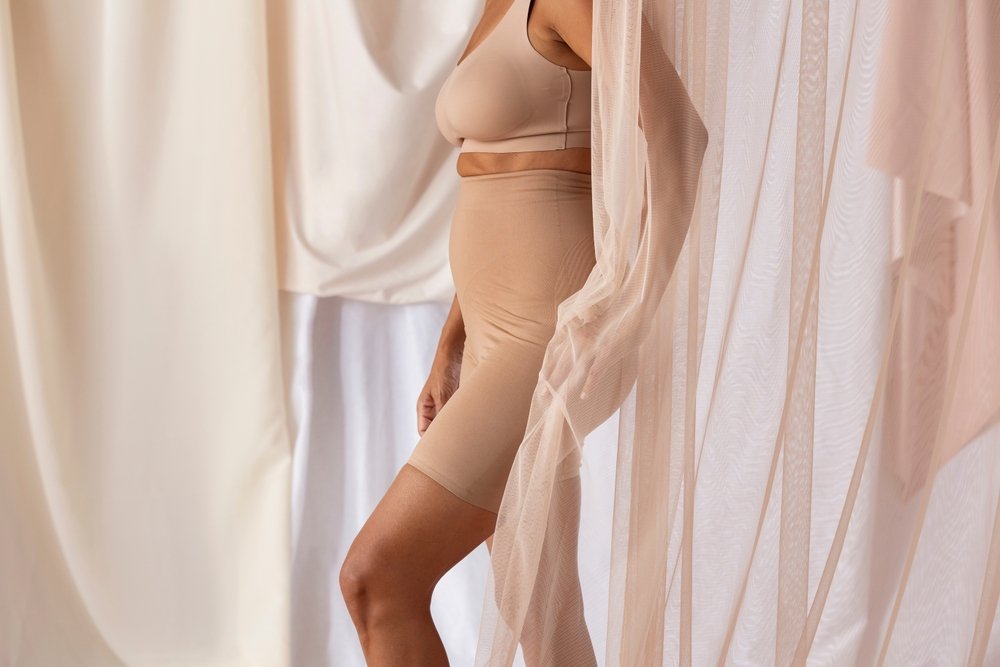
Trying on Different Sizes: Ensuring Comfort and Compression
When trying on different sizes of a faja (compression garment), it’s important to prioritize both comfort and compression. Here are some tips to ensure the best fit:
- Start with Your Initial Size: Begin by trying on the faja size that aligns with your measurements according to the size chart. This will serve as a baseline for comparison.
- Assess Comfort: Put on the faja and pay attention to how it feels on your body. It should provide a snug, supportive fit without causing excessive discomfort or pain. Make sure the fabric is not digging into your skin or causing irritation.
- Evaluate Compression: Compression is crucial for postoperative recovery and contouring. The faja should apply consistent pressure to the treated areas, helping to reduce swelling and promote healing. Assess if the faja provides the desired level of compression. It should feel supportive without being overly restrictive or causing breathing difficulties.
- Range of Motion: Move around and perform basic activities while wearing the faja. Ensure that it allows for comfortable movement without impeding your range of motion. If you feel restricted or unable to move freely, consider trying a different size.
- Check for Proper Coverage: Verify that the faja provides adequate coverage for the treated areas. It should securely cover the waist, hips, and buttocks, depending on the type of procedure you underwent.
- Seek Professional Guidance: If you’re unsure about the fit or need expert advice, consult with your surgeon, healthcare professional, or a faja specialist. They can assess the fit, make recommendations, and suggest alternative sizes or styles to ensure optimal comfort and compression.
Remember that individual preferences may vary, and what feels comfortable and provides adequate compression can differ from person to person.
Consulting with Your Surgeon: Seeking Professional Advice on Faja Size
Consulting with your surgeon is crucial when determining the appropriate faja (compression garment) size. Here’s why seeking professional advice is important:
- Surgical Expertise: Your surgeon has in-depth knowledge of the specific procedure you underwent, including the techniques used and the expected outcomes. They understand how the faja plays a role in your recovery and can provide insights on the ideal size for your unique case.
- Personalized Recommendations: Every individual’s body is unique, and your surgeon is familiar with your specific needs and surgical results. They can assess your measurements, body shape, and postoperative progress to provide personalized recommendations on the faja size that will best support your healing process.
- Experience with Faja Sizing: Surgeons have extensive experience working with patients who have undergone similar procedures. They have likely seen a variety of body shapes and sizes and understand how different faja sizes can impact recovery and aesthetic outcomes. Relying on their expertise can help you avoid potential sizing errors.
- Consideration of Swelling and Healing: Swelling is a common occurrence after surgery, and your surgeon can take that into account when advising on the appropriate faja size. They will consider how the garment should accommodate swelling and promote optimal healing.
- Avoiding Complications: Wearing an ill-fitting faja can lead to complications such as excessive pressure, restricted blood flow, or uneven compression. By consulting with your surgeon, you can ensure that you select the right size to minimize the risk of complications and achieve the best possible results.
Your surgeon can guide you through the process of selecting the correct faja size based on their expertise and your individual circumstances. They may provide specific recommendations, suggest brands or styles, or even have fajas available for purchase directly from their clinic.
References:
- Shapes Secrets Fajas. “How to Choose Your Post-Surgery Faja.” Accessed on March 25, 2022.
- Ogee Recovery. “How Long Should You Wear A Faja?” Accessed on May 18, 2022.
